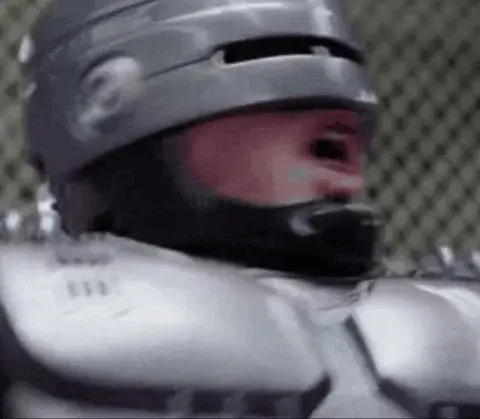44
Comprehensive guide to drum & bass and jungle styles and subgenres - Lemmy.World
lemmy.worldI originally posted it on Reddit a couple years back and people rated it a lot.
I decided to share it here as well. - Jungle [early 90s-present] - the genre
that predates dnb and laid foundations for the genre. It ranges between 160-168
BPM and focuses on rearranged and chopped breakbeats sampled from funk and soul
records. The rhythm is often much more complex as opposed to dnb which mostly
features 2-step pattern (snares hitting on 2 and 4). Basslines are usually
assembled out of 808 kicks. The tracks frequently feature old rave synths as
well as dub and reggae samples since the genre partially originates from
soundsystem culture. // EXAMPLE [https://www.youtube.com/watch?v=y99JZugos9w],
EXAMPLE2 [https://www.youtube.com/watch?v=3N_YrRZ4CZM] - -
Atmospheric/Intelligent [early 90s-late 90s] - less agressive, more “mature” and
sophisticated side of jungle. It puts a lot of emphasis on ambient-like pads and
takes a lot of influence from jazz, often samples it. The sound peaked shortly
after it was born and slowly died out as producers shifted to producing more
accessible liquid pieces. // EXAMPLE
[https://www.youtube.com/watch?v=OFU6_PC9rcU], EXAMPLE2
[https://youtu.be/MhcqYxogdsU] - - Breakcore [mid 90s-present] - jungle pushed
to extreme, often goes beyond 200 BPM and doesn’t take itself seriously. Very
experimental in nature and allows for free interpretation by any artist willing
to produce it. Breakcore has been blended together with many different genres
including chiptune, classical, IDM and heavy metal just to name a few. It’s
mostly written by japanese nowadays since the genre found a lot of fans in that
country. // EXAMPLE [https://www.youtube.com/watch?v=mfspbLAlulQ], EXAMPLE2
[https://www.youtube.com/watch?v=Rb678vL_D40] - - Ragga [early 90s-present] - a
branch incorporating more reggae elements than average jungle track, usually
featuring rapping MC. // EXAMPLE [https://youtu.be/ACCDZlLLV0I], EXAMPLE2
[https://youtu.be/jjFbQnTU950] - - Drumfunk [early 00s-present] - while a lot of
modern jungle productions use same samples, production techniques and even
hardware from 90s, drumfunk producers don’t concern themselves with those and
aim at pushing the boundries forward. The term is niche and it applies mostly to
pieces with much more complex drumwork with less or no focus at all on making
them mixable or danceable. The style samples a lot of new breakbeats which
weren’t used in old jungle tracks. Drumfunk has also slightly faster tempo. //
EXAMPLE [https://www.youtube.com/watch?v=td9e_XCmLaE], EXAMPLE2
[https://www.youtube.com/watch?v=qnSAoCVTG74] — - Dancefloor [late 00s-present]
- the most mainstream-sounding subgenre and most accessible to casual listeners
as it has similar aesthetic of popular EDM music. The style puts emphasis on
dominant, very melodic lead synths and vocals. It’s mostly disconnected from
rest of the scene due to its commercial approach and doesn’t resemble other
subgenres. Most recognised dancefloor artists come from UK, a lot of lesser
known acts originate from Netherlands. // EXAMPLE
[https://www.youtube.com/watch?v=OLfxiDmQr0Y], EXAMPLE2
[https://www.youtube.com/watch?v=04QpInkz9so] — - Liquid [early 00s-present] -
arguably most widespread dnb subgenre, focuses on atmosphere and melodic parts
(more mellow and smoother than dancefloor), often features vocals. Influenced by
house/jazz/soul, usually uses old jungle breaks as a foundation for drums. It
differs from intelligent jungle as it has simpler structure and patterns. The
tracks very often contain piano progressions as the main element of the track,
althrough that’s not requirement for piece to classify as liquid. Apart from
higher production value that came with technological advancements, the sound
remained pretty much the same for the last two decades. // EXAMPLE
[https://www.youtube.com/watch?v=ANJBXHkbXoM], EXAMPLE2
[https://www.youtube.com/watch?v=uSLtu8y1kVs] — - Neurofunk/Neuro [early
00s-present] - focuses on hefty, substantially filtered and usually distorted
basslines. Over the years, the subgenre gradually became much heavier and
focused on midrange bass than in early days. In the last decade the scene
started putting emphasis on perfecting technical side of production, which
wasn’t prioritized in the past as much. The subgenre originates from UK but it
quickly found fanbase in eastern Europe and Russia. Most of current generation’s
artists are based in these areas. // EXAMPLE
[https://www.youtube.com/watch?v=LR8IN0FjdnE], EXAMPLE2
[https://www.youtube.com/watch?v=ZgmNn8H-ZOA] - - Techstep [mid 90s-early 00s] -
the style that predates neurofunk, deep and technoid subgenres. It’s
characterised by raw and synthetic sound inspired by sci-fi movies and techno.
It cemented itself in the genre with previously mentioned crude 2-step drum
pattern and served as general transition from jungle to dnb. Nowadays it’s
pretty much nonexistent in its original form and carried only by a small few
labels. // EXAMPLE [https://www.youtube.com/watch?v=VGiPNcuRVeM], EXAMPLE2
[https://www.youtube.com/watch?v=e_UV3EVNrls] - - Technoid/Techno-dnb [early
00s-early 10s] - very niche sound aiming at reproducing mechanical, driving
techno vibe (hence the name) while still retaining syncopated rhythm and dnb
tempo. The tracks often feature 8 beat loop loop with characteristic offbeat
kick patterns (althrough straight 4/4 isn’t uncommon). The style has very little
melodic content apart from detuned one-shot synths and arps. It used to be
interchangeably mixed with neurofunk in sets in the past. Currently dead with no
active labels. // EXAMPLE [https://youtu.be/hQWpehA-q3o], EXAMPLE2
[https://youtu.be/MYCyPngv-DU] — - Jump Up [mid 90s-present] - one of the oldest
scenes. The sound went through many iterations during its lifespan but it was
always focused on very catchy, midrange basslines, hooks, high tempo (sometimes
going up to 180 BPM) and being stimulating. Usually the rhythm is very basic and
straightforward, making the style simple to dance to. Currently the producers
use breaks less often than in first years of genre’s lifespan and prefer to rely
on one-shot samples. The basses became more screechy in recent years as well.
The recent “foghorn” tracks also fit jump up’s definition. It has biggest
fanbases in UK and Belgium. // EXAMPLE
[https://www.youtube.com/watch?v=PlRn5bGF_4o], EXAMPLE2
[https://www.youtube.com/watch?v=w1xPnuUWClU] — - Crossbreed/Hardcore dnb [mid
00s-present] - uses loud, distorted kicks known from hardcore techno, the style
is very aggressive. Depending of the artist, the tracks can focus more either on
hardcore or dnb aesthetic as there is no set rule which genre “should” be
favoured. It features distinctive “crossbreed snares” characterized by tonal,
metallic sound. Collaborations between crossbreed and neuro artists and labels
featuring both subgenres aren’t uncommon sight. The style originates from
Netherlands. // EXAMPLE [https://www.youtube.com/watch?v=2Y1hXZcXI3I], EXAMPLE2
[https://www.youtube.com/watch?v=LzCw6TwUjpQ] - - Darkstep/Skullstep [mid
00s-late 00s] - the term referring to aggressive, dark dnb in 00s that wasn’t
simply neurofunk. The most common characteristics shared between tracks are
universal usage of classic amen break, distorted reese bass progressions
(althrough simpler and less processed than in neuro) and distinctive switches
between drum patterns and breaks every each few bars. In addition to that, the
tracks incorporate characteristics of techstep and technoid to varying degrees
depending of the artist. A lot of productions from that era sampled horror
movies. The scene transitioned into crossbreed near the end of decade. It
shouldn’t be confused with breakcore as the pieces have coherent structure, they
aren’t as random and glitchy as well. // EXAMPLE
[https://www.youtube.com/watch?v=MJM4SLsfcM8], EXAMPLE2
[https://www.youtube.com/watch?v=sARp5oZOMj8] — - Deep [early 10s-present] -
noticeably more toned down compared to other subgenres. Generally characterized
by accenting sub-bass and showcasing it as core element of the tracks next to
drums and avoiding usage of excessive midrange sounds. The emphasis on
minimalism varies between labels/producers. Usually has clean, cold aesthetic
but artists often merge it with another styles to yield interesting results.
Pioneered in UK but quickly picked up by artists from entire Europe. // EXAMPLE
[https://www.youtube.com/watch?v=Wwpd1jOPNgM], EXAMPLE2
[https://www.youtube.com/watch?v=6kX8XFlk8-k] — - Halftime [early 00s-present] -
this subgenre is most confusing as it’s divided between a couple of branches
unrelated to each other that happened to start shaping in same time period. To
describe it most vaguely, two-bar drum patterns in halftime have only one snare
(or in some cases none at all) instead of two like in all other dnb subgenres. I
listed three most common interpretations that are based off that idea, althrough
please note there might be more of them. - - Leftfield Bass [early 10s-present]
- style that fuses experimental sound design from dnb and dubstep with oldschool
hiphop beats. The tempo is kept at 85 BPM which makes it possible to mix it with
drum & bass. // EXAMPLE [https://www.youtube.com/watch?v=8u-e9PuHPPs], EXAMPLE2
[https://www.youtube.com/watch?v=pTqtsD0tK7M] - - 170/Halfstep [mid 00s-present]
- also referred to as “Samurai sound” from the name of the label that
popularised it on the scene. The pieces frequently have long, continuous
progression without clear division between intro-drop-bridge sections. The
drumwork is rich and utilizes many percussion sounds, accompanied by low, deep
basslines. Kicks have high presence and dictate pace of the tracks, snares are
often placed at the last beat or are completly absent. In some productions there
are noticeable nods towards jungle and dub. // EXAMPLE
[https://www.youtube.com/watch?v=WNsH8qtFvug], EXAMPLE2
[https://www.youtube.com/watch?v=oAPxN-TcDYQ] - - Autonomic [late 00s-present] -
it derived its name from the podcast pioneering the sound. The style is
characterised by incorporating old drum machine samples, minimalism and
experimental approach. It can be described as offspring of IDM, making it
suitable for home listening rather than being aimed at getting played at clubs.
// EXAMPLE [https://www.youtube.com/watch?v=-i0I_auScUw], EXAMPLE2
[https://www.youtube.com/watch?v=7AnyCPvYg9s] — - Drumstep [early 10s-mid 10s] -
sound of 2010 era dubstep [brostep] with dnb tempo. Mostly produced and listened
by Americans. Dead nowadays as it capitalised on short-lived brostep’s
commercial success. // EXAMPLE [https://www.youtube.com/watch?v=plWGCUAlR2A],
EXAMPLE2 [https://www.youtube.com/watch?v=1NNq9yqFyQ4] — - Sambass [early
00s-present] - dnb with elements of brazillian music, mostly produced by
brazillian artists. // EXAMPLE [https://www.youtube.com/watch?v=4mXuk5kJEHM] — -
Reggae dnb [mid 00s-present] - slightly different from previously mentioned
ragga as it’s faster, has 2-step beat and more emphasis on reggae chops. //
EXAMPLE [https://www.youtube.com/watch?v=WEbKVclFeuE], EXAMPLE2
[https://www.youtube.com/watch?v=BzI6HBEsxuk]
You must log in or register to comment.
This is the first post I’ve ever saved for consumption later.
As someone who came up with DnB thriving in the late 90s, this list is rock solid 🙌


